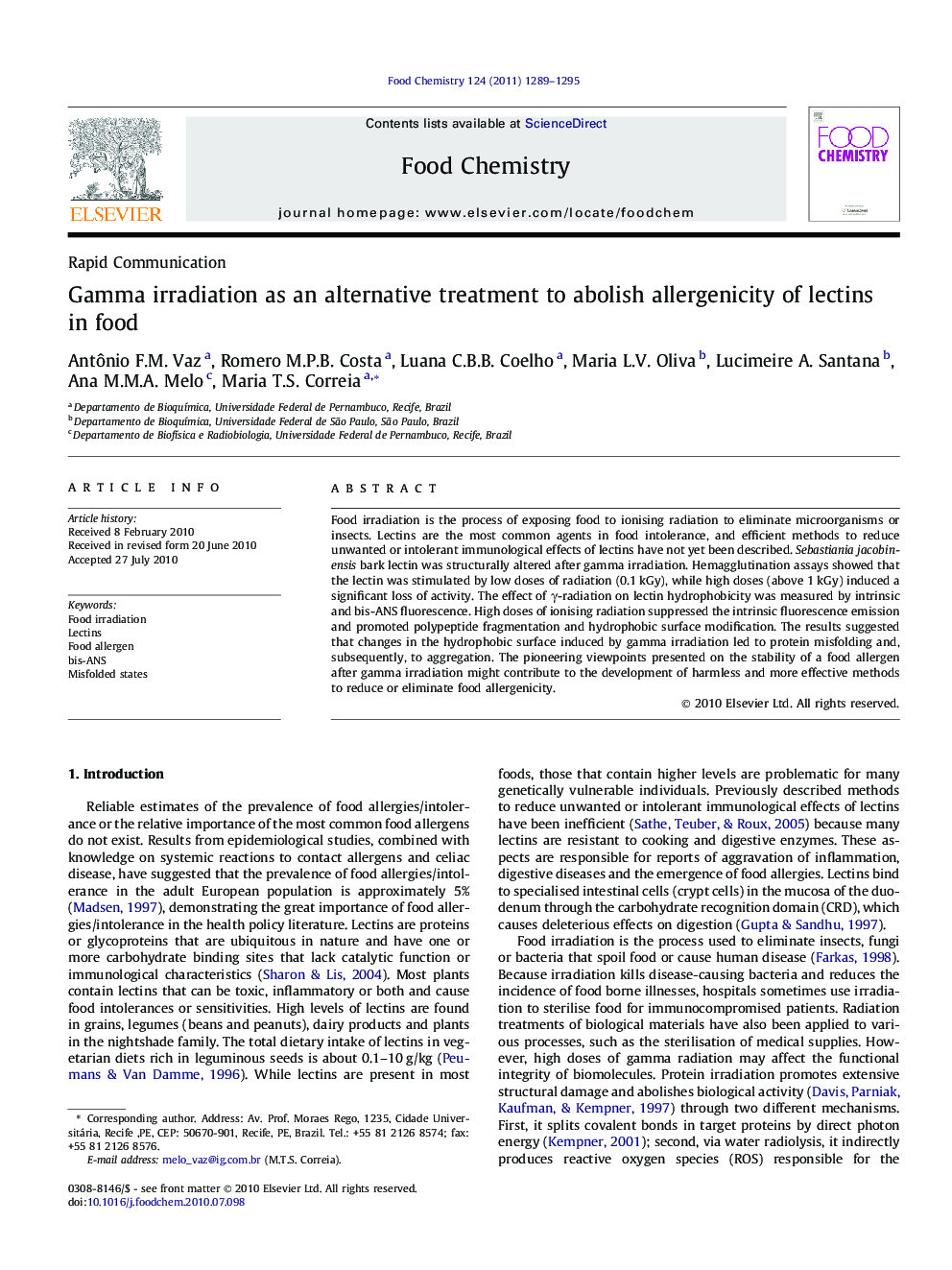| Article ID | Journal | Published Year | Pages | File Type |
|---|---|---|---|---|
| 1189881 | Food Chemistry | 2011 | 7 Pages |
Food irradiation is the process of exposing food to ionising radiation to eliminate microorganisms or insects. Lectins are the most common agents in food intolerance, and efficient methods to reduce unwanted or intolerant immunological effects of lectins have not yet been described. Sebastiania jacobinensis bark lectin was structurally altered after gamma irradiation. Hemagglutination assays showed that the lectin was stimulated by low doses of radiation (0.1 kGy), while high doses (above 1 kGy) induced a significant loss of activity. The effect of γ-radiation on lectin hydrophobicity was measured by intrinsic and bis-ANS fluorescence. High doses of ionising radiation suppressed the intrinsic fluorescence emission and promoted polypeptide fragmentation and hydrophobic surface modification. The results suggested that changes in the hydrophobic surface induced by gamma irradiation led to protein misfolding and, subsequently, to aggregation. The pioneering viewpoints presented on the stability of a food allergen after gamma irradiation might contribute to the development of harmless and more effective methods to reduce or eliminate food allergenicity.
